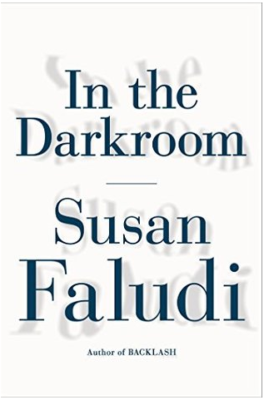In the Darkroom by Susan Faludi – Exploring Gender Identity

I have more than a passing understanding of the multifaceted aspects of gender identity. And yet . . . Susan Faludi takes the question of identity to a whole new level and shows the many layers and overlapping aspects of how we see ourselves. Gender is only one of those facets that creates our sense of self. And she explores how gender can also be conflated with other aspects of identity, like Jewishness.
Faludi is a researcher, writer and journalist and a well known feminist too. Yet, I was not familiar with any of her other books or articles before reading this one. She gives a thoroughly researched account of the science and psychology around the work of early “sexologists.” In 1919 in Berlin, [Magnus] Hirschfeld established the world’s first institute to study sexuality, which issued one of the earliest scientific reports on transsexual surgery.
Yet Hirschfeld espoused an ethic directly at odds with the dualism that would come to prevail in the United States later in the century. “The number of actual and imaginable sexual varieties is almost unending,” Hirschfeld wrote in 1910. “In each person there is a different mixture of manly and womanly substances, and as we cannot find two leaves alike on a tree, then it is highly unlikely that we will find two humans whose manly and womanly characteristics equally match in kind and number.”
And there we have it in 1910 – the concept that gender is on a spectrum and is not just a binary.
There is also a fascinating chapter on how feminism and feminists have dealt with the question of transgender women. That has been quite an evolution and she pulls from many published works to show just how varied and passionate the views are among transwomen themselves.
This book also provides a fascinating history of Hungary. While that was most unexpected, I enjoyed learning the history of this country through the story of her father’s life and his family’s history there. It is the most personal of journeys through a country’s long and fraught existence and it comes to life through the impact it had on individuals whose stories emerge through Susan’s relentless pursuit of surviving family members.
On the morning that my father showed me the photo of my great-grandparents’ “Golden Jubilee,” I’d asked her to identify the well-dressed people in the picture. They were my relatives, but I’d never met any of them. My father slowly ran a finger across the faces as she named them, though not by their names. “Shot in a house. Killed in a brick factory. Died in a cattle car. Gassed in Auschwitz. Gassed in Auschwitz. Gassed. Gassed. Gassed . . .” Only three of the fifteen pictured survived the war.
Fifty-six members of the Friedman-Schwarcz family of Kassa, my grandfather Jenő’s side of our family, were killed during the deportations.
The very fact that one of every three people murdered in Auschwitz was a Hungarian Jew takes on new meaning when you understand the long history of Hungarian/Magyar nationalism and their antipathy toward Jews that exists in the extreme to this very day. All of that detailed history provides such an intricately textured context against which she is working to sort out this person who is her father.
Susan Faludi does a masterful job in weaving deep research into captivating accounts of what it all might mean. And there are no absolutes here. The book is a journey and an exploration, one that is very intimate as we share the ten years she had with her father living as Stefanie in the Budapest where she was born as István Friedman in 1927.
This book is one that is still on my mind. There is so much stuffed into these pages. When I plucked this out of a very big “to read list” a week ago, I did not realize that it was on The New York Times list of “Ten Best Books” of 2016. Its selection is well deserved. I highly recommend it